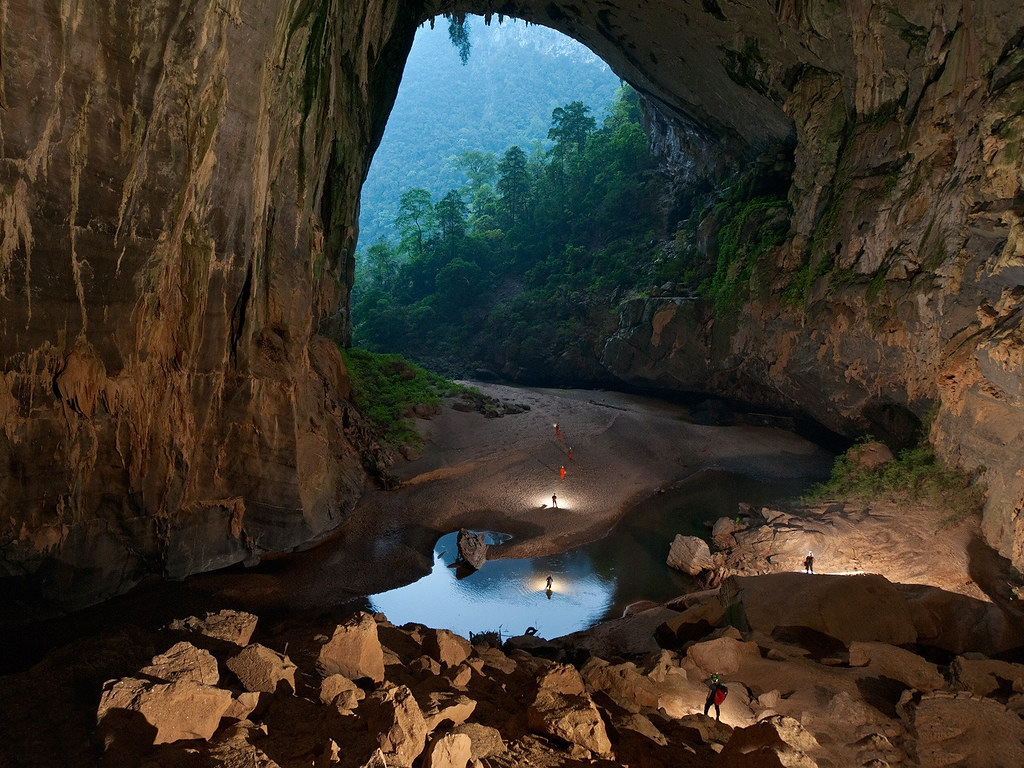Deep in the heart of Phong Nha-Kẻ Bàng National Park in central Vietnam lies one of the most extraordinary natural wonders on Earth — Sơn Đoòng Cave. Recognized as the largest cave in the world by volume, Sơn Đoòng is not just a geological marvel; it is a world unto itself.
Discovered only recently in the 1990s and fully explored in the 2000s, this massive cave has captured the imagination of scientists, adventurers, and nature lovers with its breathtaking scale and otherworldly beauty.
Its Size is Ridiculous

What sets Sơn Đoòng apart from other caves around the world is its sheer size. The main chamber of the cave is over 5 kilometers (3.1 miles) long, 200 meters high, and 150 meters wide. To put that into perspective, a 40-story skyscraper could easily fit inside it, and it is large enough to house an entire New York City block, complete with buildings.
The cave's volume is estimated at over 38.5 million cubic meters, a number that dwarfs all other known caves. Visitors often describe the experience as walking through a canyon or entering a subterranean world that defies conventional scale.
Its dimensions are so immense that clouds can form inside the cave due to the differences in temperature and humidity between the inside and outside environments.
Discovered by Chance

Despite its colossal proortions, Sơn Đoòng Cave remained unknown to the outside world until quite recently. It was first found in 1991 by a local man named Hồ Khanh, who stumbled upon the cave entrance while seeking shelter during a storm. However, due to the steep descent and roaring underground river at the mouth of the cave, he did not explore it.
It wasn’t until 2009 that a British caving team, led by Howard and Deb Limbert, returned with Hồ Khanh’s help to map and explore the cave. What they found was beyond anything they could have imagined: a lost world hidden beneath the jungle floor, vast and untouched.
Sculpted by Nature

Sơn Đoòng is believed to have formed 2 to 5 million years ago as river water eroded away the limestone beneath the Annamite Mountains. Over millennia, this process carved out the immense passageways and vaulted ceilings that define the cave today.
The underground river continues to shape the cave, flowing through its depths and occasionally flooding during the rainy season. Inside, massive stalagmites — some over 70 meters tall — rise like ancient stone towers.
In several places, the cave ceiling has collapsed, allowing light to pour in and creating openings called dolines. These natural skylights support lush, jungle-like ecosystems inside the cave, adding to its surreal beauty.
Has Its Own Ecosystem

One of the most fascinating aspects of Sơn Đoòng Cave is that it hosts its own microclimate and ecosystem. Where sunlight penetrates through the dolines, vegetation grows, forming miniature forests inside the cave. Moisture condenses into clouds, and unique species of insects and plants thrive in the sheltered environment.
Biologists continue to study the cave's unique flora and fauna, some of which may be endemic to this underground habitat. These ecosystems, isolated from the outside world, demonstrate nature’s resilience and ability to adapt in even the most unexpected places.
A Treasure Both for Tourism and Science

Since being opened to limited tourism in 2013, Sơn Đoòng has become one of the most exclusive adventure destinations on the planet. Access is tightly regulated to protect the fragile environment within the cave.
Only a few hundred people are permitted to visit each year through guided expeditions, which involve several days of trekking, river crossings, and camping inside the cave itself. This careful approach balances the desire to share the cave’s majesty with the need to preserve its pristine condition.
For those lucky enough to enter, the experience is unforgettable. Not only because of its size but because of the feeling of stepping into a hidden world untouched by time.



















